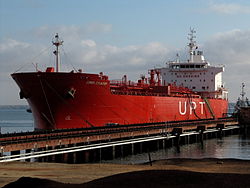This article needs additional citations for verification .(April 2020) |
Transport in Angola comprises:
This article needs additional citations for verification .(April 2020) |
Transport in Angola comprises:
Two trans-African automobile routes pass through Angola:
There are three separate railway lines in Angola:
Reconstruction of these three lines began in 2005 and they are now all operational. The Benguela Railway connects to the Democratic Republic of the Congo.
In April 2012, the Zambian Development Agency (ZDA) and an Angolan company signed a memorandum of understanding (MoU) to build a multi-product pipeline from Lobito to Lusaka, Zambia, to deliver various refined products to Zambia. [1] [2]
Angola plans to build an oil refinery in Lobito in the coming years.

The government plans to build a deep-water port at Barra do Dande, north of Luanda, in Bengo province near Caxito. [3]

The old airport in Luanda, Quatro de Fevereiro Airport, will be replaced by the new Dr. Antonio Agostinho Neto International Airport.
![]() This article incorporates public domain material from The World Factbook (2025 ed.). CIA. 2003. (Archived 2003 edition.)
This article incorporates public domain material from The World Factbook (2025 ed.). CIA. 2003. (Archived 2003 edition.)